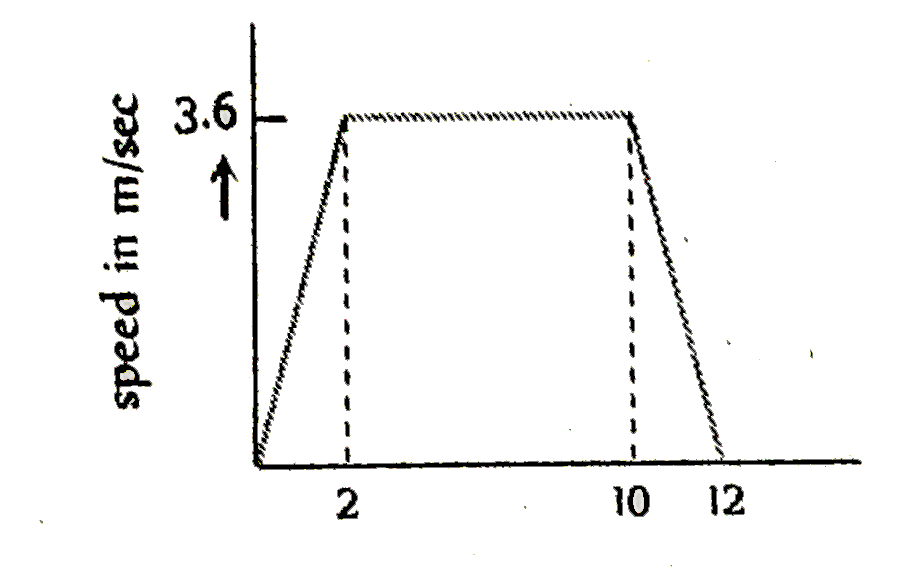A total of 4900 joule was expended in lifting a 50 kg mass. The mass was raised to a height of
98 m
960 m
245 m
10 m
The correct Answer is:D
To solve the problem of lifting a 50 kg mass with an expenditure of 4900 joules, we can use the formula for gravitational potential energy. The potential energy (PE) gained when an object is lifted to a height (h) is given by the equation:
PE=m⋅g⋅h
Where:
- PE is the potential energy (in joules),
- m is the mass (in kg),
- g is the acceleration due to gravity (approximately 9.8m/s2),
- h is the height (in meters).
Step 1: Write down the given information
- Total energy expended (PE) = 4900 joules
- Mass (m) = 50 kg
- Acceleration due to gravity (g) = 9.8 m/s²
Step 2: Set up the equation for potential energy
Using the formula for potential energy, we can set up the equation:
4900=50⋅9.8⋅h
Step 3: Solve for height (h)
To find the height h, we rearrange the equation:
h=490050⋅9.8
Step 4: Calculate the denominator
First, calculate 50⋅9.8:
50⋅9.8=490
Step 5: Substitute back to find h
Now substitute back into the equation for h:
h=4900490
Step 6: Perform the division
Now, perform the division:
h=10meters
Conclusion
The height to which the 50 kg mass was raised is 10 meters.
---
- PE is the potential energy (in joules),
- m is the mass (in kg),
- g is the acceleration due to gravity (approximately 9.8m/s2),
- h is the height (in meters).
- Total energy expended (PE) = 4900 joules
- Mass (m) = 50 kg
- Acceleration due to gravity (g) = 9.8 m/s²
Using the formula for potential energy, we can set up the equation:
To find the height h, we rearrange the equation:
First, calculate 50⋅9.8:
Now substitute back into the equation for h:
Now, perform the division:
The height to which the 50 kg mass was raised is 10 meters.
Topper's Solved these Questions
Similar Questions
Two blocks of masses 10 kg and 30 kg are placed along a vertical line. The first block is raised through a height of 7 cm. By what distance should the second mass be moved to raise the centre of mass by 1 cm?
View SolutionA machine which is 75 percent efficient, uses 12 joules of energy in lifting up a 1 kg mass through a certain distance. The mass is then allowed to fall through that distance. The velocity at the end of its fall is (in ms−1)
View Solution
Knowledge Check
- Question 1 - Select One
The work done in lifting a mass of 1 kg to a height of 9.8 m is
A1 JB(9.8)2 JC9.8 JDnone of these - Question 2 - Select One
The work done in lifting 1 kg mass to a height of 9.8 m is about
A1JB9.8JC(9.8)2JD1(9.8)J - Question 3 - Select One
A machine which is 75 percent efficient, uses 12 joules of energy in lifting up a 1 kg mass through a certain distance. The mass is then allowed to fall through that distance. The velocity at the end of its fall is (in ms−1)
A√24B√32C√18D√9
A machine, which is 72 percent efficient, uses 36 joules of energy in lifting up 1kg mass through a certain distance. The mass is the allowed to fall through that distance. The velocity at the end of its fall is
View SolutionQuestion Stimulus :-
The work done by a man in lifting an object of mass 5 kg to a height 50 cm from the ground level is (g=10ms−2)View SolutionThe power (P) of an engine lifting a mass of 100 kg upto a height of 10 m in 1 min is
View SolutionA lift is going up. The total mass of the lift and the passenger is 1500 kg . The variation in the speed of the lift is as given in the graph. The tension in the rope pulling the lift at t=11th sec will be
 View Solution
View SolutionThe amount of work done in raising body of mass 1 kg to a height of 9.8 mis
View Solution

